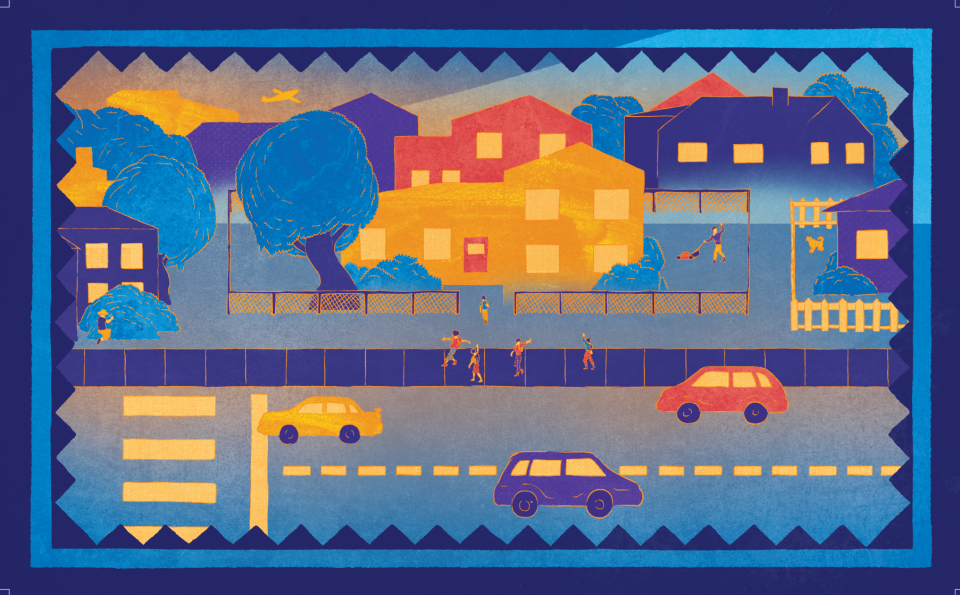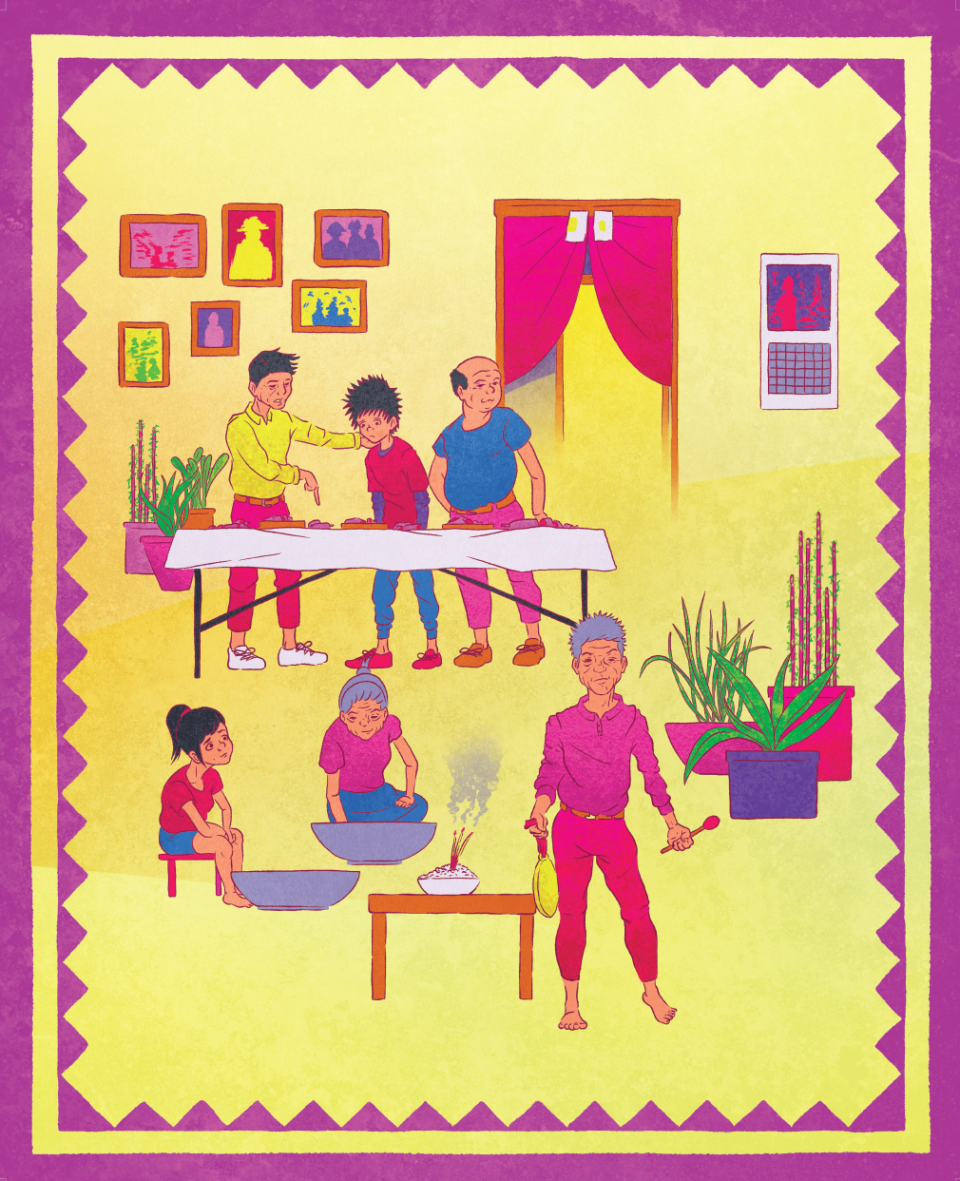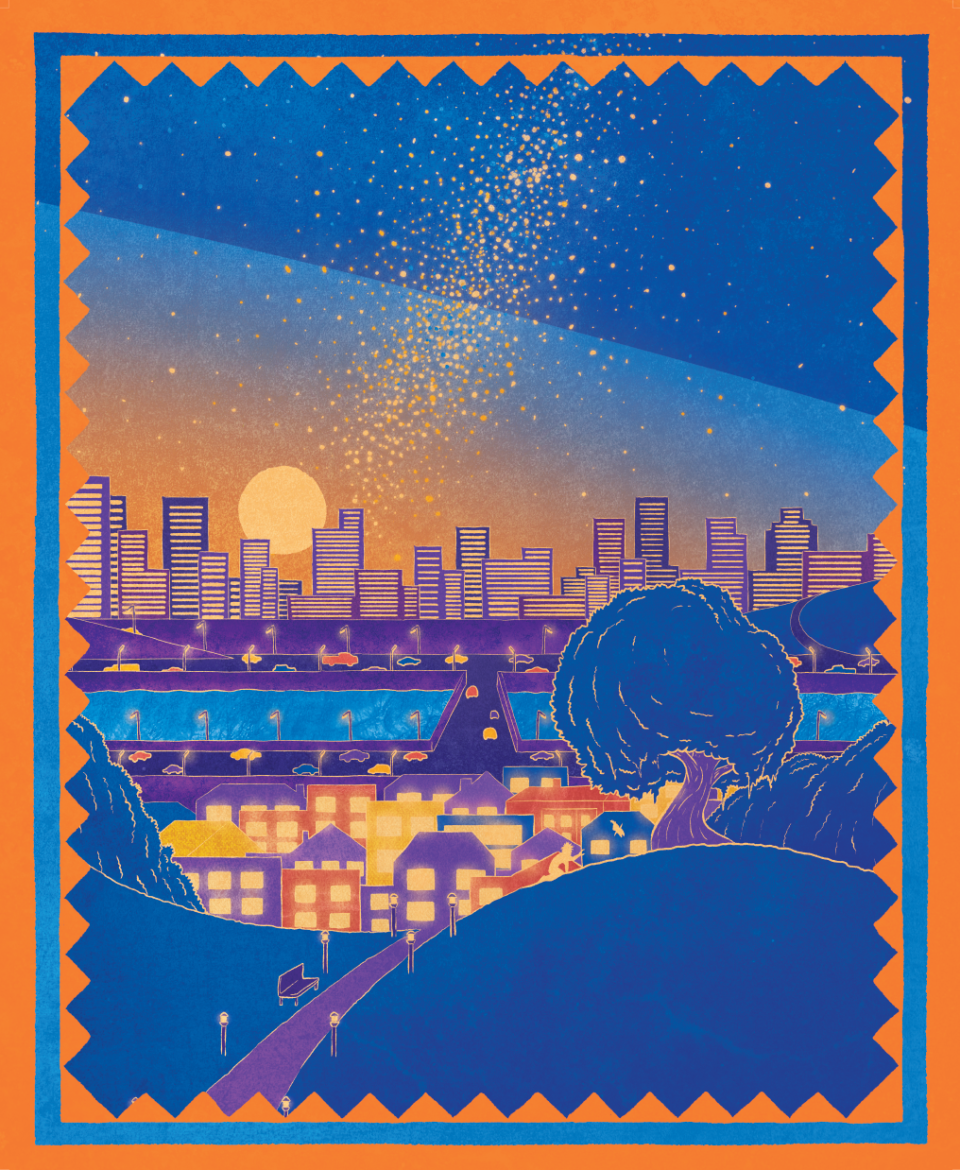Wausau West graduate Jackson Yang tells stories by blending Hmong craftwork with contemporary art

WAUSAU – Jackson Yang struggled to figure out who he was when he was a kid.
Yang is Hmong, and his family settled in Wisconsin after fleeing the violence that splintered their home country of Laos in the wake of the Vietnam War.
The first Hmong residents began to arrive in Wisconsin as refugees in the 1970s after the end of the Vietnam War. Hmong soldiers fought alongside U.S. forces in the Secret War in Laos and have been discriminated against in Laos by a government that views them as an enemy.
Yang was born and raised in Wausau, but he never felt like he belonged. He was too Asian to feel comfortable in school with American kids; yet also "not Hmong" enough to fit in, even at family gatherings where it seemed like everyone could speak Hmong except him.
He describes being "caught between two different cultures," and the teenage Yang responded by deciding to "reject outright" the long-held traditions and values of the Hmong culture.
That was then. Now the 27-year-old Yang has embraced his Hmong heritage. An educational journey that has culminated in a master's degree in design from the University of Wisconsin-Stout coincided with him diving into Hmong traditions, including the culture's art and folklore.
His thesis was based on the melding of his lifelong love of art and drawing with his re-learning about what it means to be Hmong. He blended traditional Hmong needlework with contemporary design to create his own unique artistic vision.
Yang is now aiming that vision toward a young adult book that could help youth like him growing up in the United States.

As a child, Yang found art to cope with language, cultural barriers
Yang's struggle with finding an identity as a young Hmong-American is so prevalent that the National Library of Medicine has a term for it: intergenerational cultural dissonance. The issue can cause problem behaviors in youth and lead to parental-child conflict.
That didn't happen with Yang, who was raised by his single mother along with his brother, who is about 10 years older. His mother, Pang Yang, who died a couple of years ago from COVID-19, spoke very little English. And because Yang couldn't speak Hmong fluently, they couldn't have complex conversations.
Although he grew up in a Hmong-speaking household and could speak basic Hmong as a small child, as he got older and attended school, he became primarily an English speaker and lost most of his Hmong skills.
He felt most comfortable with Hmong kids his own age, cousins and his schoolmates, but he still felt a disconnect because of that language barrier.
It also prevented him from fully understanding cultural events, such as a "soul calling" ritual in which a Hmong shaman would call on ancestral spirits to help someone who was ill.
As a child, Yang recalled not understanding what was happening. His older relatives had a difficult time explaining the nuances.
Eventually Yang simply stopped trying to understand. And because he was often teased or mildly chastised about his poor Hmong language skills, he stopped using the language altogether.
That meant Yang led a fairly self-directed life, and from an early age he found his place by drawing. As a boy, he loved the Teenage Mutant Ninja Turtles, and spent hours drawing the characters.
"I was always trying to draw them. ... Art was always my way of escaping," Yang said. "Eventually that led to this passion, that I just wanted to learn more about art."
Related: Hmong pop star singer Maa Vue scores another YouTube hit with release of 'Tu Moo'
By fifth grade, he had an inkling he could do something with art. In middle and high school, he discovered computer design. By the time he graduated from Wausau West High School in 2014, he knew that he wanted to design and illustrate using computers.
He enrolled in graphic design at UW-Stout and said he was interested in designing publications like books and magazines.
"I was part of a program called Stoutward Bound (support for first-generation ethnic minority students), and it was a with a group of diverse students, Asian kids, Latino kids, black kids," he said. "It was our own little family."

Blending paj ntaub story cloth sewing techniques with modern artistic vision
Under the influence of other minority students, Yang began to look at being Hmong differently. He joined UW-Stout's Hmong student organization and began to learn more about the culture.
He took new notice of Hmong arts and crafts, especially paj ntaub, the term used to describe sewing techniques done by Hmong women to decorate cloth and clothing.
When he was growing up, Yang watched his mother spend hours stitching paj ntaub sitting on a stool, using a simple lamp for light. He didn't pay any attention when he was kid. But suddenly, the artform stirred his creative spirit.
He began to find out more about the shamanism and the rites he attended as a child, how those beliefs and activities fit into the history of the Hmong people as a whole. It gave him a deeper feeling of understanding and connection, he said.
Yang learned more about the "history of the Hmong people, how much we have struggled, how beautiful the art and culture can be," he said. "I don't agree with everything about the culture. But the parts I do find to be beautiful, that makes me proud to be Hmong. I’m also American. I’m a Hmong-American, and that’s who I want to be."
There are parts of traditional Hmong culture that Yang said he still rejects, particularly the heavily patriarchal society that often leads to sexism and the diminishment of women.
He said he also rejects a streak of homophobia that can be part of traditionalistic thinking.
"I want to get to a point where we can have respect for everyone in our community," Yang said. "We're starting to get to that point now."
He's more actively engaged with the culture now that he's an adult, he said, particularly with his family members, which include young nieces and nephews. He aims to help them avoid the growing pains he went through.
He's asking more questions, listening to more stories. He still doesn't speak Hmong very well, though. He'd like to learn more of the language, but that will have to wait until he gets more established professionally and has more time.

Yang wants to create a book and art to help next generation
When he enrolled in the master's program to study design, he used paj ntaub as a foundation of his thesis. He blended his youthful excitement of drawing cartoons with his newfound appreciation of Hmong art, and he found his artistic voice.
Yang said he's developed an outline of a story, and created illustrations that will offer up a semi-autobiographical journey of self-discovery.
At the end of August, he'll begin work as an adjunct professor at UW-Stout, teaching two-dimensional illustrations using computer programs. While there, he says he'll continue work on the story and the book.
"Writing is not my strong suit," he said.
Yang has an outline of the story he'd like to tell, along with illustrations, and he thinks maybe he can collaborate with a Hmong writer to help him complete the project.
“If I had something like this at that age that really struck a chord with me, that could have potentially helped me fall in love with my culture at a younger age," Yang said. "I want to do something like that for the next generation."
Keith Uhlig is a regional features reporter for USA TODAY NETWORK-Wisconsin based in Wausau. Contact him at 715-845-0651 or kuhlig@gannett.com. Follow him at @UhligK on Twitter and Instagram or on Facebook.
This article originally appeared on Wausau Daily Herald: Wausau West grad, UW-Stout professor, blends Hmong culture with design

